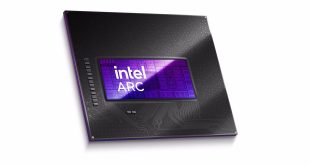Today we get a clearer picture of AMD's hardware plans heading well into 2013 thanks to the company presenting an updated client roadmap at its annual Financial Analyst Day yesterday.
As we've learned through several previous roadmaps, their APU days have only just begun with preparations for the arrival of Trinity, Brazos 2.0 and Hondo APUs to come out this year, along with the Vishera (2nd-gen FX series) CPU.
AMD is expecting Trinity to do really good things for the company, aiming it square on as their main x86 contender when it debuts in Q2 of this year. Otherwise known as the 2nd gen of A Series processors, Trinity is based on a 32nm process featuring DX11 graphics, two or four Piledriver cores (of which are said to be at least 25% better in the performance stakes compared to the Stars cores used in its Llano APUs) and with a TDP that can drop to just 17 W with certain mobile parts.
The Brazos 2.0 (C and E Series) APUs are 40nm based, as is Hondo (Z Series) oriented more toward tablets. These low-power, low-cost mobile/desktop offerings feature either one or two Bobcat cores with DX11 graphics and a super low TDP between 4.5 W to 18 W.
Once Vishera surfaces later this year, it looks to be AMD's sole weapon for desktops right through 2013 as well. This 32nm based part will refresh AMD's FX series with the use of 4, 6 or 8 Piledriver cores. Apart from the possibility of higher-clocked models heading well into 2013, it doesn't look like there'll be much else happening in this segment for some time.
If we turn our attention to next year, AMD has a lot of 28 nm chips lined up which comprise new APUs in the form of Kaveri (replacing Trinity), Kabini and Temash and also its Sea Islands GPUs which will apparently bring with them a new type of architecture and HSA (Heterogeneous Systems Architecture) features.
Kaveri will be squarely aimed at the mainsteam mobile and desktop segments, featuring integrated GCN based DX11.1-supporting graphics in conjunction with either two or four Steamroller x86 cores and HSA application support. Meanwhile, Kabini and Temash will take care of the lower cost, low power segment, also carrying GCN graphics and using Jaguar x86 cores (up to four of them for Kabini and two for Tamesh).
KitGuru says: A sign of AMD saying goodbye to the CPU altogether by 2015?
 KitGuru KitGuru.net – Tech News | Hardware News | Hardware Reviews | IOS | Mobile | Gaming | Graphics Cards
KitGuru KitGuru.net – Tech News | Hardware News | Hardware Reviews | IOS | Mobile | Gaming | Graphics Cards






